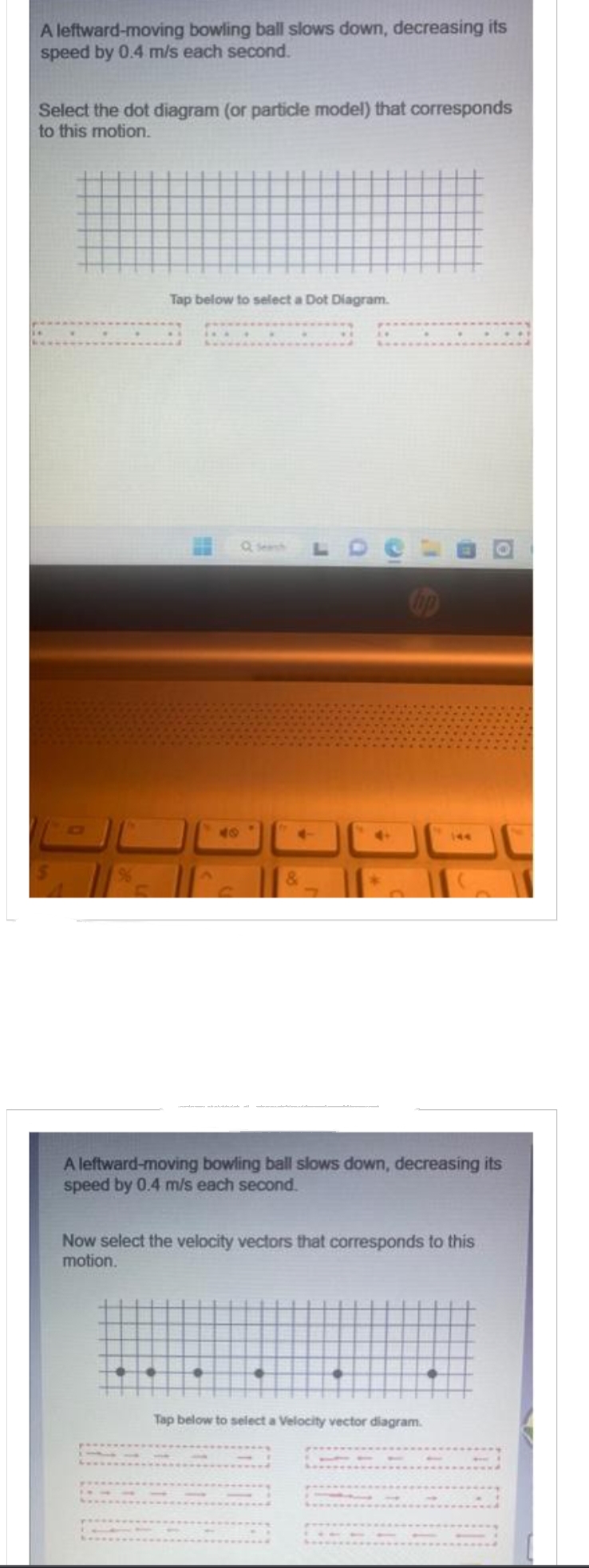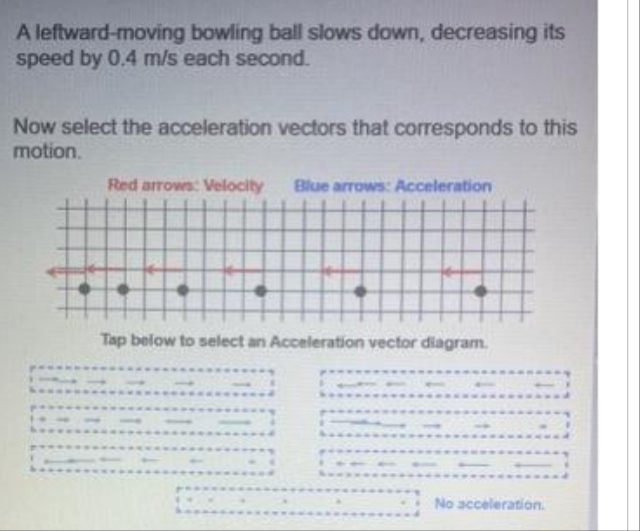speed by 0.4 m/s each second. Select the dot diagram (or particle model) that corresponds to this motion. Tap below to select a Dot Diagram. & J hp A leftward-moving bowling ball slows down, decreasing its speed by 0.4 m/s each second. Now select the velocity vectors that corresponds to this motion. Tap below to select a Velocity vector diagram.
speed by 0.4 m/s each second. Select the dot diagram (or particle model) that corresponds to this motion. Tap below to select a Dot Diagram. & J hp A leftward-moving bowling ball slows down, decreasing its speed by 0.4 m/s each second. Now select the velocity vectors that corresponds to this motion. Tap below to select a Velocity vector diagram.
Related questions
Question

Transcribed Image Text:A leftward-moving bowling ball slows down, decreasing its
speed by 0.4 m/s each second.
Select the dot diagram (or particle model) that corresponds
to this motion.
Tap below to select a Dot Diagram.
49
y***
&
J
A leftward-moving bowling ball slows down, decreasing its
speed by 0.4 m/s each second.
Now select the velocity vectors that corresponds to this
motion.
Tap below to select a Velocity vector diagram.

Transcribed Image Text:A leftward-moving bowling ball slows down, decreasing its
speed by 0.4 m/s each second.
Now select the acceleration vectors that corresponds to this
motion.
po
Red arrows: Velocity Blue arrows: Acceleration
Tap below to select an Acceleration vector diagram.
No acceleration.
Expert Solution
This question has been solved!
Explore an expertly crafted, step-by-step solution for a thorough understanding of key concepts.
This is a popular solution!
Trending now
This is a popular solution!
Step by step
Solved in 2 steps with 1 images
